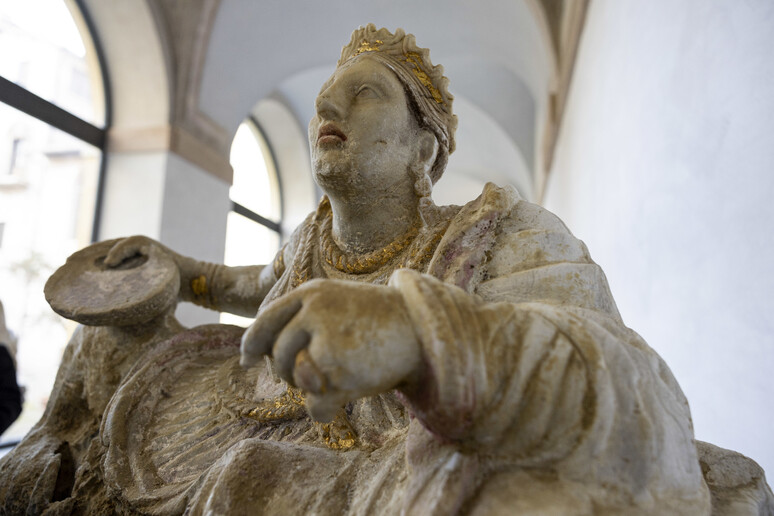Italian art cops have recovered
Etruscan artefacts of what they say is an "exceptional" value.
The trove includes two sarcophahi and eight urns which had been
taken by tomb raiders in an illegal dig, said the Carabinieri
Unit for the Protection of the Cultural Heritage (NTPC).
The sarcophagi with their related funerary objects date from the
Hellenistic period of the 3rd century BC while the urns come
from a clandestine excavation in Città della Pieve in southern
Tuscany.
The urns, all intact, are in white Umbrian travertine, partly
decorated with high reliefs with scenes of battles, hunting and
friezes, some of which preserve polychrome pigments and gold
leaf coatings, while others depict the myth of Achilles and
Troilus.
Of the two sarcophagi, one is currently represented only by the
covering and the other complete with the skeleton of the
deceased.
The funeral trousseau is particularly rich, consisting of
furnishings and pottery, both earthenware and metal, including
four bronze mirrors, one of which with the ancient deification
of Rome and the she-wolf suckling only Romulus, a balsamarium
still containing organic traces of the perfume used in
antiquity, a bone comb, bronze situlae and oinochoe, commonly
used by Etruscan women during banquets and symposiums.
The recovery operation of these finds, and in particular of the
urns, considered by experts to be one of the most important
recoveries of Etruscan artefacts ever carried out during an
investigative action, was illustrated by the chief prosecutor of
the Perugia Public Prosecutor's Office, Raffaele Cantone, with
his deputy Annamaria Greco, by the commander of the Carabinieri
for the Protection of Cultural Heritage, Francesco Gargaro, with
the Minister of Culture, Alessandro Giuli, and the head of the
Department for the Protection of Cultural Heritage of the
ministry, Luigi La Rocca.
The activities were started last April, following a
communication from the Carabinieri of the Cultural Heritage
Protection Command which reported a possible illegal excavation
in the area between Chiusi and Città della Pieve.
Giuli, the culture minister, said: "Today the Carabinieri
Command for the Protection of Cultural Heritage is returning to
Italy and to the knowledge of its thousand-year history some
very precious Etruscan finds, even if this discovery still has
to tell us part of its truth.
"I hold back my instincts as an Etruscanology enthusiast and
leave to those who will intervene after me the
technical-scientific information that will allow us to place
these finds, but it is already evident to the naked eye that we
are in front of something extremely significant".
Giuli went on to praise the art cops for their "exemplary work"
in this and other operations over the last year.
"There have been many recovery operations conducted in the last
year: from the 750 archaeological finds repatriated from London
to the 60 archaeological finds with an estimated value of over
20 million dollars repatriated from the United States, without
forgetting the return of the precious incunabulum of 1493, in
which Christopher Columbus, returning from America, describes
his journey to the Spanish royals and which the US government,
thanks to the work of diplomacy, has agreed to return to us",
said the minister.
ALL RIGHTS RESERVED © Copyright ANSA











